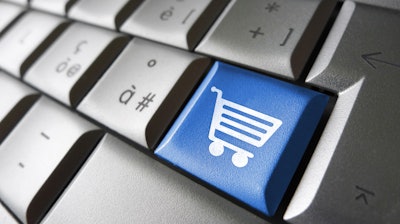
According to the Alibaba.com U.S. SMB Confidence Survey, those utilizing B2B e-commerce channels identify the top benefits of this platform as reaching more customers, finding customers more quickly, and increasing profit margins. So, if you’ve opened an online store — or are about to — these three strategies can help you make the most of it.
Become a Page-fectionist
B2B (or wholesale) purchases typically take longer than B2C purchases, partly because they cost more, partly because more is at stake, and partly because there are more stakeholders involved who need to sign off on a purchase. You can shorten purchasing time by building a complete page that answers as many questions as possible up front.
Providing useful information can also help improve your ranking, since e-commerce sites often use an automated ranking system that takes the product listing’s quality and accuracy, supplier quality, and buyer preference into account. That means don’t just offer text descriptions, but insert charts, pictures, or illustrations so that buyers can get a fuller sense of your product. Add in trading details — such as payment methods, minimum order quantity (MOQs), and price drops based on volume. These can also help improve your ranking and make buyers feel more confident about using you as a supplier.
As you work to share as many details as possible, use SEO to maximize the impact of every field you fill out. Your product descriptions should be well-crafted and filled with keywords. You can even optimize your product name by including highly searched terms, such as product materials or ingredients.
The last step to creating a truly complete page is to authenticate your profile if it’s an option available to you. Check and see if the e-commerce marketplace platform you’re using has a preferred system for verifying sellers. It’s often worth investing in authentication because having a verified page can help you generate more inquiries and give you access to more tools, training, and customer support than unverified members. Plus, having an authenticated page can help you instantly establish credibility among prospective customers.
It’s All About the Customer
If you want loyal customers, make them feel as if they have your full attention. That means outstanding service, a quick response time, and the willingness to make adjustments to better serve their needs.
Start by building relationships with your customers. One way to do this — while also improving your ranking — is to be active in your e-commerce store. In addition to filling out your product pages, be sure to complete every section of your company profile. If it’s an option, consider putting together a custom page for your store.
It’s also important to check your messages regularly and quickly respond to customer queries. Aim to reply to buyer queries within at least three days. Even better, respond to messages within a few hours, both to improve customer satisfaction and show that you are an active supplier. Excellent customer support can help you generate positive reviews — and avoid pans.
However long you take to get back to customers, be sure that your response is flexible and personal. Showing a willingness to adjust your minimum order quantities (MOQs) and production times can go a long way in inspiring customer loyalty. If you let buyers customize goods, say so clearly and prominently on your page. That information is especially important to buyers who want to create their own product or product line.
Always be Growing
Even when you think your page is in a good place, there is always room to do even better. After all, your market and customers aren’t standing still. To keep up, you’ll need to constantly grow and make improvements. For example, try highlighting one combination of keywords one week and a different combination the next week, so you can compare them and use the ones that perform better.
On marketplaces like Alibaba.com, you can then make those keywords work harder with keyword advertising, also known as KWA. Sellers who optimize their KWA generally see a significant increase in inquiries. KWA is typically done on a pay-per-click model in which sellers bid for different audiences. You can decide which kinds of audiences you want to target—placing higher bids for buyers depending on their location or other metrics, such as their response rate. Ultimately, a combination of your bid and your product quality score will determine where your product shows up in search results.
In addition, look for opportunities to cross-sell. Buyers will often download your entire catalog — not just glance at the curated products in your storefront—so make sure it’s complete. After all, if they don’t know you sell a product, they’re unlikely to ask; you need to inform them up front in order to increase your chances of making additional sales.
The more time and energy you spend on your product page and e-commerce strategy, the more effective you’ll be at converting online prospects into buyers and buyers into brand loyalists. An e-commerce platform can be a powerful tool both in terms of sales and relationship building—but it’s hard work and you only get out what you put into it.
Jonah is the Director of Customer Success for Alibaba.com's North American B2B branch.






















